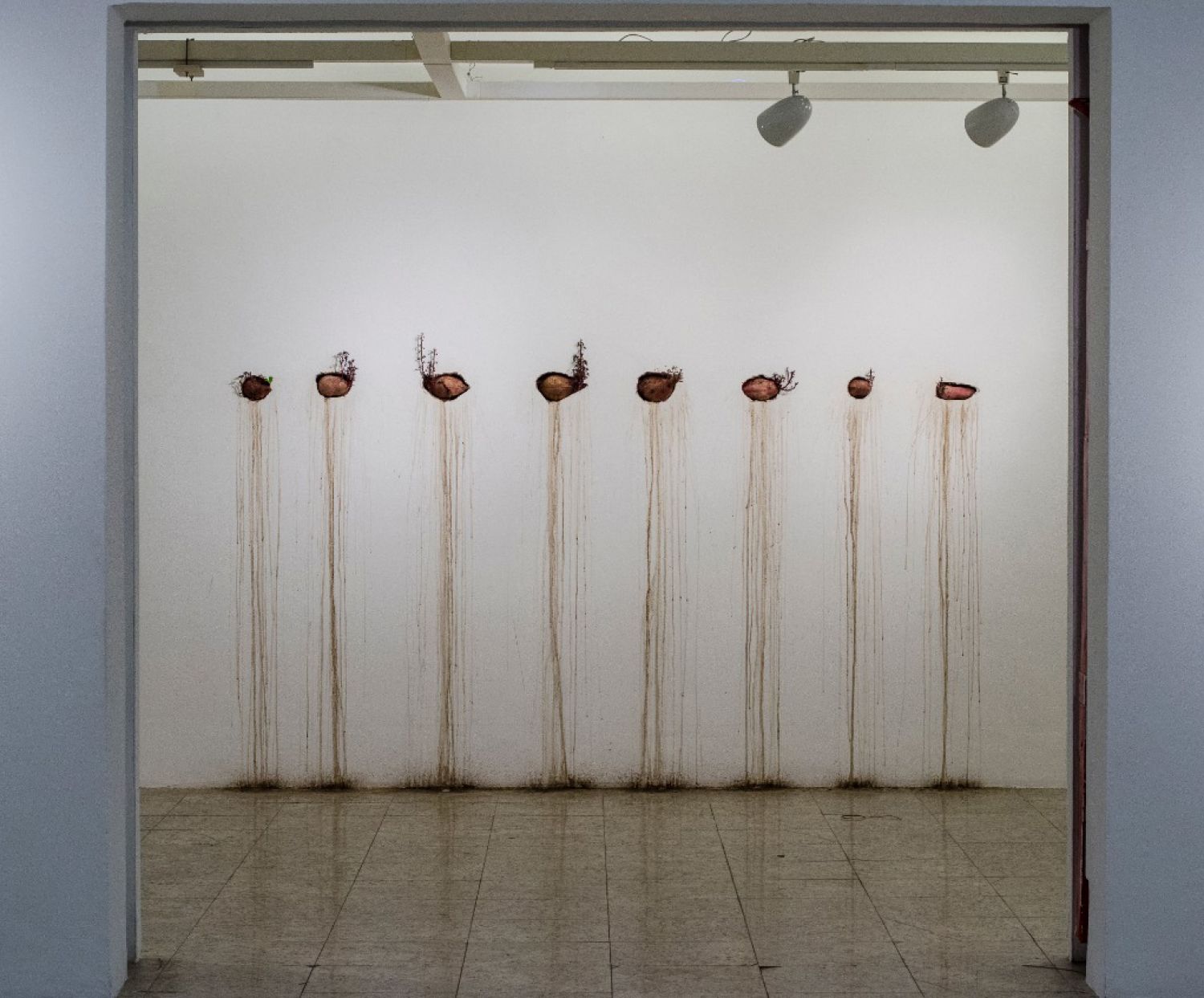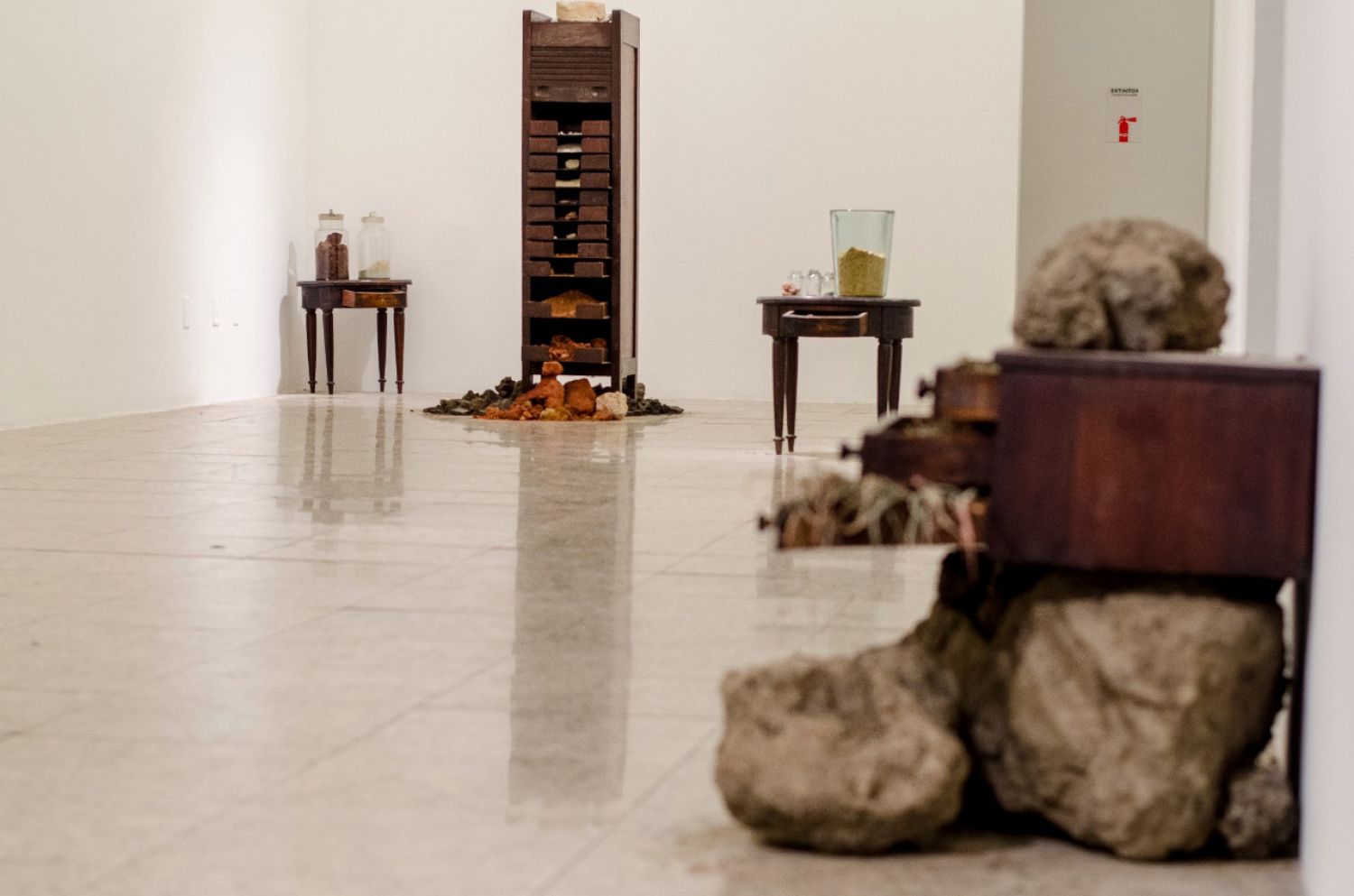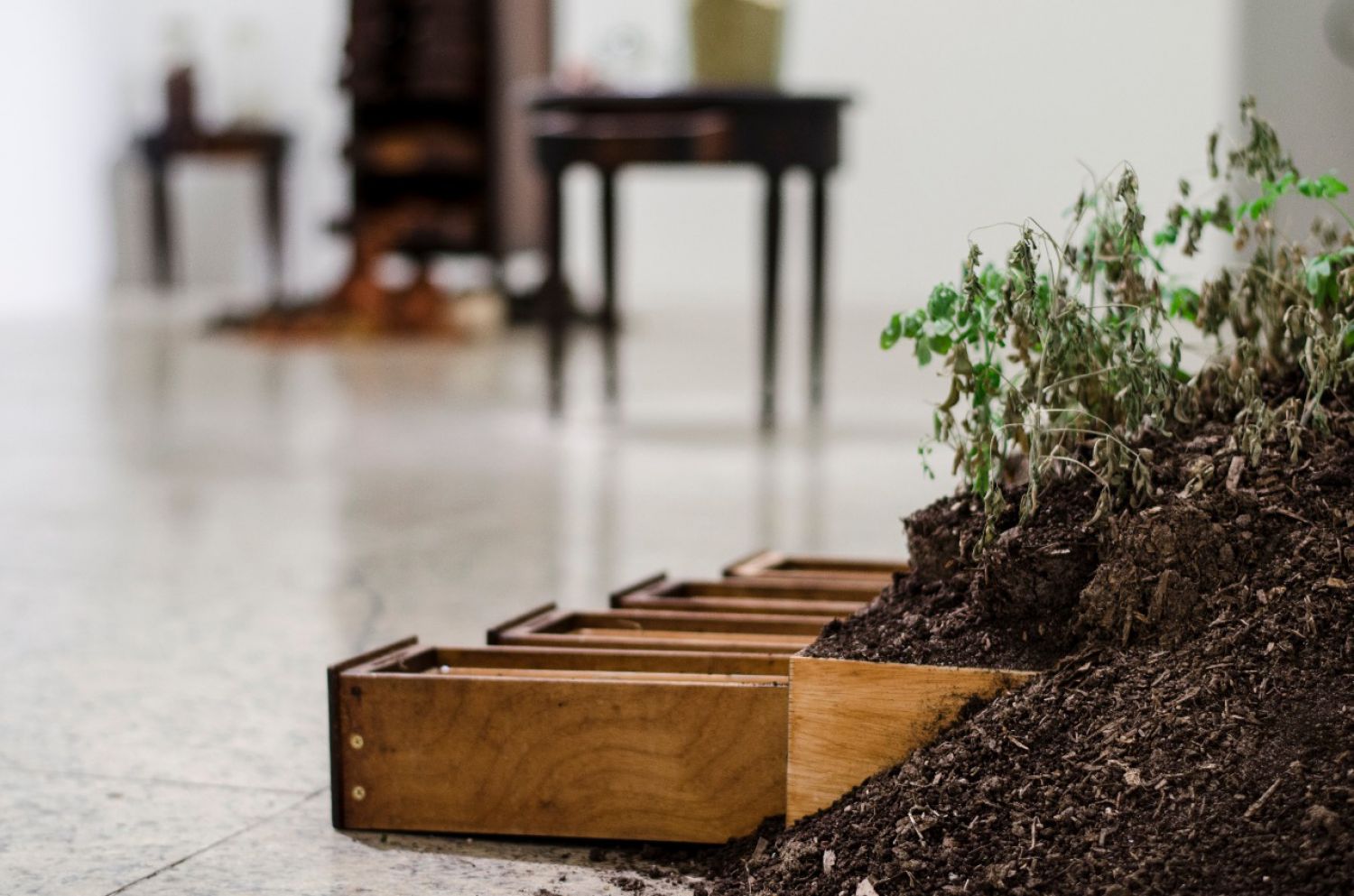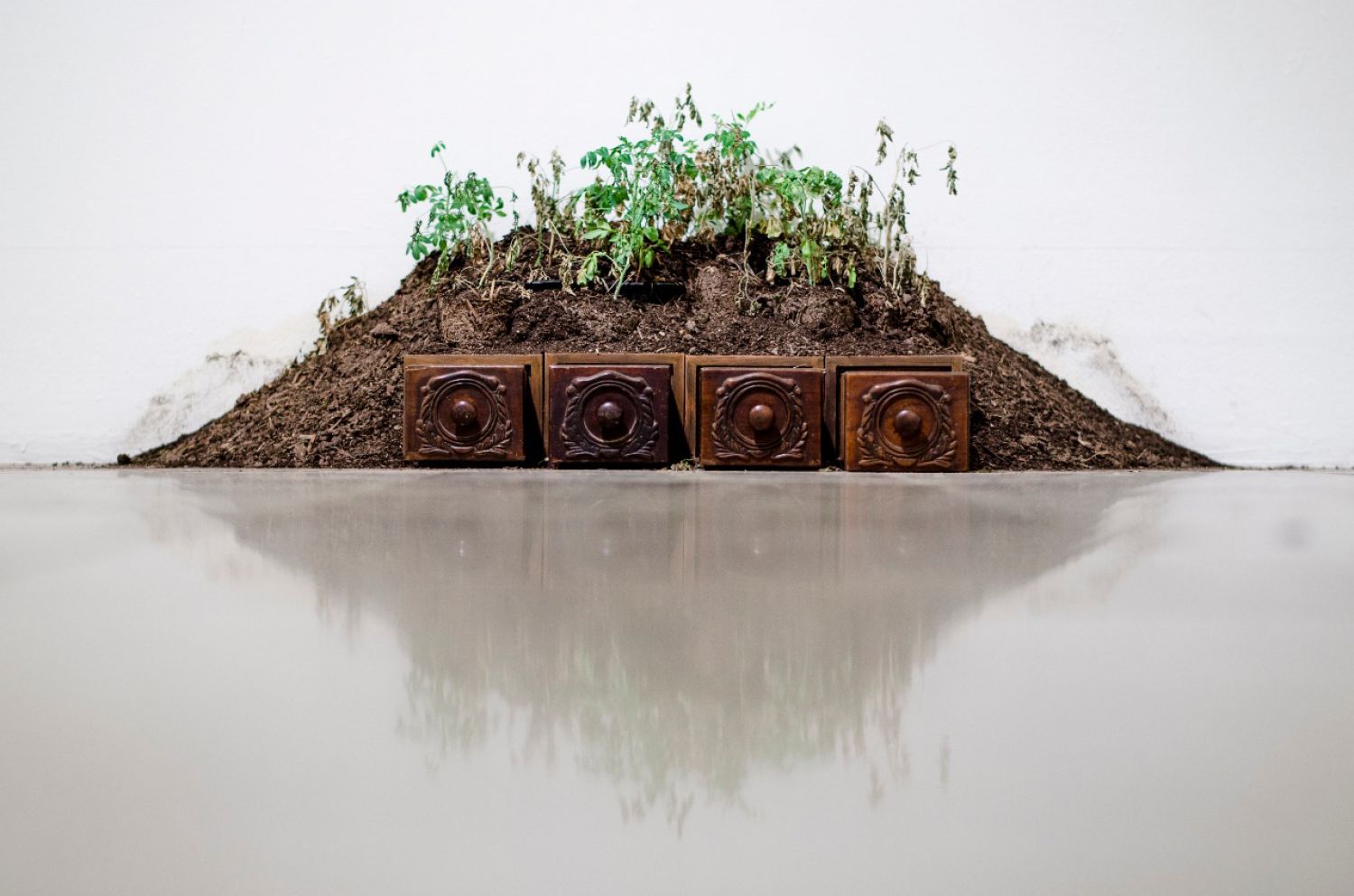Si
Sabyne Cavalcanti




MOBILE BODY
[...] the private space must know how to open up to flows of people entering and leaving, to be the place of passage for a continuous circulation, where objects, people, words and ideas intersect. For life is also mobility, impatience for change, relation with a plural of the other. – Michel de Certau and Luce Giard
Artist and furniture are integrated in the immateriality of memory, in the daily life that is open to the flow of people, aware of the passage of time. If life is mobility, the body is mobile, creature and objects move through places, oscillate between stories that leave their marks on the skin, on the wood of the furniture, on the demolished tile. Sabyne Cavalcanti unlocks the place where she lives, leaves the doors of the Mataquiri Museum open so that the «relation with a plural of the other» becomes complete, and thus establishing the exchanges, possible in the field of affect and art.
The dwelling, recurrent in her work, means proximity to nature, to earth, to grass, to the clay that is born from the mud to be molded on the body. Like an architect, Sabyne organizes spaces that harbor feelings and actions of approximation between beings, places and objects. Previous works such as SI(I), Casa Oca (Hollow House) and Suprasensação (Suprasensation) offer dwellings built with grass, dug in the ground or molded in the body itself to become the place of being. The collecting of furniture now leads to another space, of a museological character that lets itself be invaded by stories that exude from the exhibited objects of the house-museum, previously a residence.
They are spliced spaces, interconnected by the land, by the plant that blooms in the yard, by the works that are spread by the trees. The museum and the artist live together and intermingle in everyday life. The collection of furniture, removed from the underground layers of life, spreads through rooms and quarters where the white crib in which Sabyne slept, the archive of the school where she studied, the shoe rack from the market in Cascavel, the large closet donated by friend José Tarcísio, are housed. They are objects that, like others, carry with them temporal wear, smells, intimacies covered up by memories. The lost fingerprints await the touch of new hands and the object acquires a new function: that of art.
Marisa Mokarzel
Translation from Portuguese by Susana Mouzinho
–
Images: Recording of the Mobile Body exhibition, by Sabyne Cavalcanti. Museum of Contemporary Art of Ceará, MAC-CE, 2015



